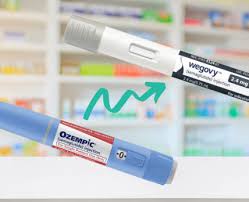Are Wegovy and Ozempic Identical?
Wegovy and Ozempic may both contain semaglutide, a GLP-1 receptor agonist, but they diverge as distinct medications designed for different purposes. Administered via weekly injections and requiring a prescription, these drugs initiate with low doses that progressively increase to achieve an effective maintenance level. Despite these shared attributes, distinctions in dosages and intended applications distinguish Wegovy from Ozempic.

Wegovy obtained approval from the U.S. Food and Drug Administration (FDA) in 2021 as a weight loss drug, introducing a novel option for individuals seeking an effective means of weight management. Patients without insurance typically spend around $1,627 for a monthly supply of four pen injectors. In contrast, Ozempic received FDA approval in 2017 for the treatment of Type 2 diabetes. A single pen, sufficient for a month, costs approximately $907 without insurance.
Comparison of Uses: Ozempic vs. Wegovy
Although Ozempic and Wegovy share the same active ingredient, their intended purposes differ significantly. Ozempic is designated for the treatment of Type 2 diabetes, particularly in patients with known heart disease. In contrast, Wegovy is tailored for chronic weight management in adults dealing with obesity or excess weight.
Both Ozempic and Wegovy contribute to appetite reduction, enabling physicians to prescribe either for weight loss and maintenance. Despite their distinct primary purposes, both medications function by slowing digestion and curbing appetite. Consequently, doctors may recommend either for weight management, even though using Ozempic for weight loss is considered an off-label application. Many insurance companies may not cover Ozempic for weight loss.
Effectiveness Comparison: Ozempic or Wegovy?
When assessing the effectiveness of Ozempic vs. Wegovy, it becomes evident that both drugs prove efficacious in assisting patients diagnosed with obesity or excess weight in reducing their body mass. Notably, both exhibit sustained weight loss, indicating a positive correlation between medication use and long-term results.
Wegovy boasts a slightly higher maximum dose compared to Ozempic. Patients on Wegovy may reach a maintenance dose of 2.4 mg, while Ozempic’s maximum dose is 2 mg. This higher dose of semaglutide provides Wegovy with a slight edge over Ozempic in terms of effectiveness.
While originally designed for treating and preventing Type 2 diabetes, Ozempic has proven to be an effective tool for weight management. Therefore, clinicians frequently prescribe Ozempic for weight loss in individuals with Type 2 diabetes who are also overweight. Similarly, numerous studies suggest that Wegovy can be an effective option for off-label use in patients with Type 2 diabetes, showing promise for long-term interventions and disease prevention.